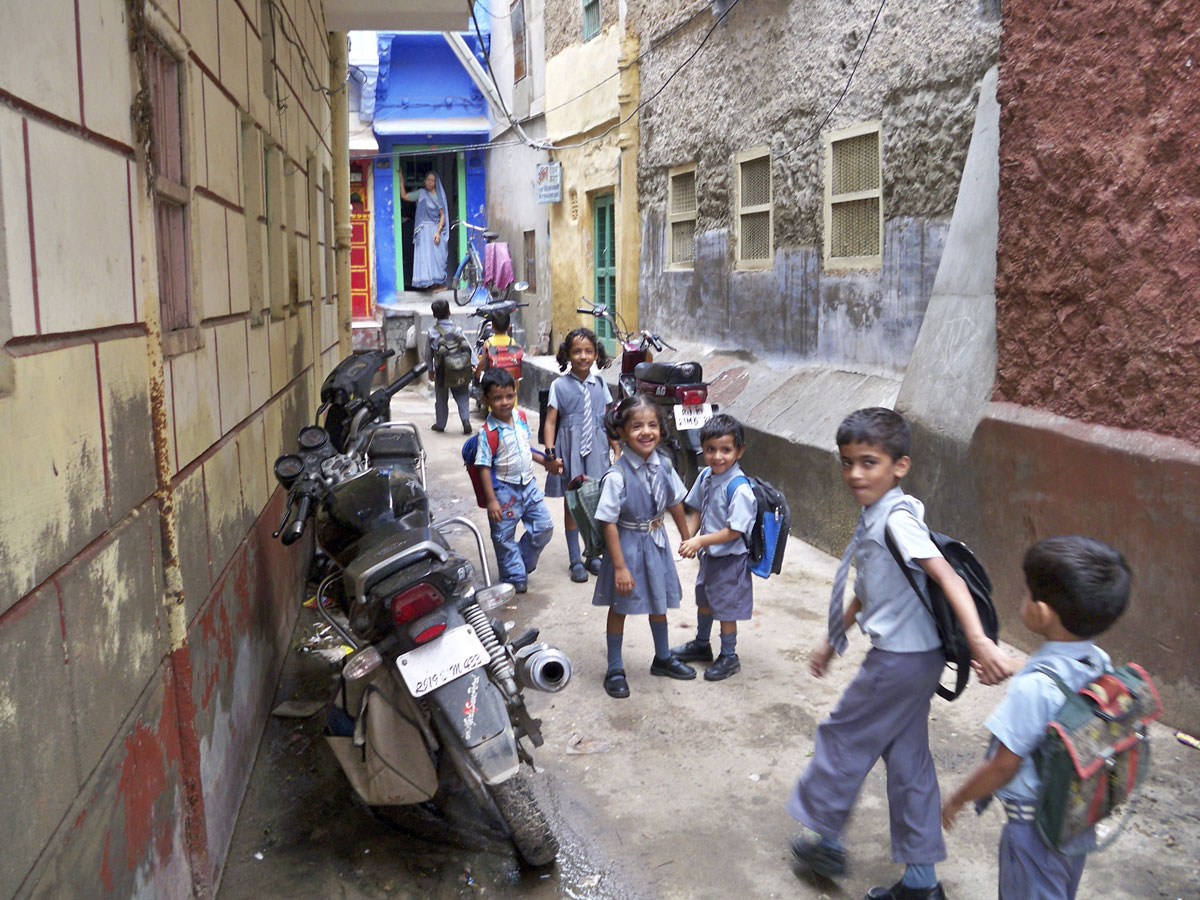BRINGING CHILDREN TO SCHOOLS
Indian school kids heading to a local school in Jodhpur, India as teacher awaits the children at the door. (Hailshadow | iStock Editorial)
India has been able to decrease its number of out-of-school children by nearly 16 million between 2000 and 2012, driving the progress in South Asia, but it still has 1.4 million children not attending primary school, a United Nations report said. A Press Trust of India report by Yoshita Singh.
UNITED NATIONS, Jan. 21 – The biggest decrease in the number of out-of-school children was seen in South Asia, where their numbers fell by 23 million between 2000 and 2012, according to a new joint report “Fixing the Broken Promise of Education for All: Findings from the Global Initiative on Out-of-School Children” was produced by UNESCO and the UN Children’s Fund (UNICEF).
Much of the global progress since 2000 in decreasing the number of out-of-school children has been driven by a small number of countries, with India alone decreasing its number of out-of-school children by nearly 16 million between 2000 and 2011.
In relative terms, 42 countries were able to more than halve their numbers of primary out-of-school children between 2000 and 2012, including Algeria, Burundi, Cambodia, Ghana, India, Iran, Morocco, Mozambique, Nepal, Nicaragua, Rwanda, Viet Nam, Yemen and Zambia.
However, despite such impressive progress in many countries, about nine percent of all children of primary school age worldwide, eight percent of all boys and 10 percent of all girls, were still out of school in 2012.
The majority, 31 million of the 58 million out-of-school children, were girls. India has 58.81 million girls and 63.71 million boys of primary school age.
As of 2011, 1.4 million children of primary school age did not go to school in India, with 18 percent girls out of school and 14 percent boys.
The other countries with more than half a million out-of-school children include Indonesia, Bangladesh, Nigeria, Pakistan and Sudan.
India had 14 percent of children in the 7-14 years age category involved in child labor.
The report said that while India has made significant improvement in primary education enrolment, the figures for children with disabilities are staggering.
Out of 2.9 million children with disabilities in India, 990,000 children aged 6 to 14 years (34 percent) are out of school.
The percentages are even higher among children with intellectual disabilities (48 percent), speech impairments (36 percent) and multiple disabilities (59 percent).
“India has made tremendous efforts to make its education system more inclusive. Under the Right to Education Act, all children have the right to go to school … To accommodate a greater number of children with disabilities, further progress is needed,” it said.


